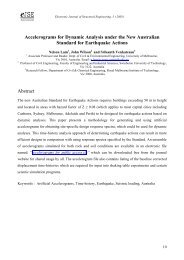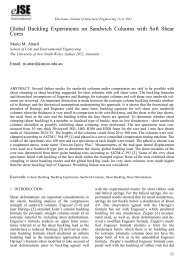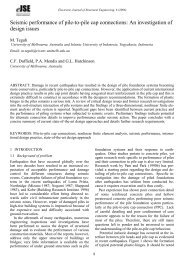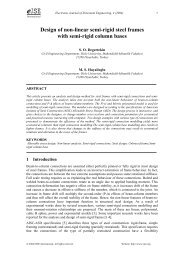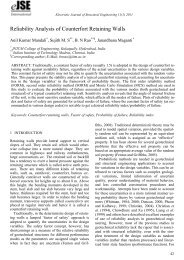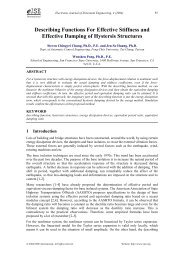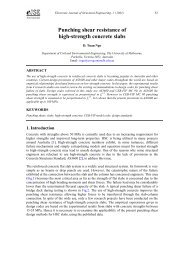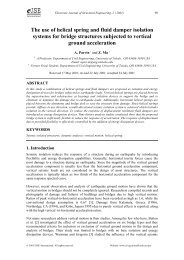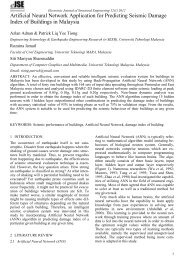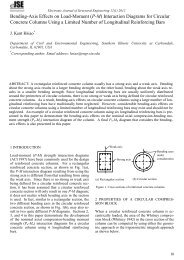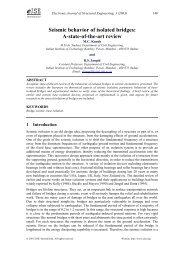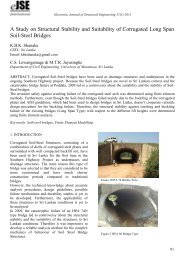Create successful ePaper yourself
Turn your PDF publications into a flip-book with our unique Google optimized e-Paper software.
A. Introduction<br />
This tutorial is quite detailed. It is intended to introduce and demonstrate many of the capabilites<br />
of <strong>SAP2000</strong>. Because we are trying to demonstrate as many different capabilities as reasonable,<br />
the example problem is not necessarily created and the results are not necessarily reviewed in the<br />
most efficient and expedient manner. Often with computer programs, what is efficient for one<br />
person may not be the best method for the next person. It is assumed that once introduced to the<br />
<strong>SAP2000</strong> capabilities and methods in this tutorial, users will decide which methods work best for<br />
them in their particular circumstances. Following is an outline of this tutorial (see the Table of<br />
Contents for a more complete outline):<br />
A. Introduction<br />
B. Description of Building Model<br />
C. <strong>Tutorial</strong> Part 1 - Creating and Analyzing the Basic Model<br />
D. <strong>Tutorial</strong> Part 2 - Pushover Analysis<br />
E. Discussion of Additional Pushover Cases<br />
If you are not interested in the pushover portion of the tutorial, you can skip parts D and E.<br />
If you are only interested in the pushover tutorial, then you can read parts A and B, skip part C,<br />
and then open the already created model (without the pushover data) named Sapwb01c.sdb,<br />
which is supplied with this tutorial, and start with Step D.<br />
Note: You must have <strong>SAP2000</strong> Version 6.20 or later to read files Sapwb01c.sdb and<br />
Sapwb01d.sdb. These files are not compatible with earlier versions of <strong>SAP2000</strong>.<br />
Finally, if you are not interested in working through the tutorial at this time, but want to see the<br />
results of the pushover analysis, then you can read parts A and B, skip part C and the first five<br />
steps of part D, and then open the already created model (with the pushover data) named<br />
Sapwb01d.sdb, which is supplied with this tutorial. You should then run the linear static and<br />
dynamic analysis by clicking Run on the Analyze menu. Next select Run Static Pushover from<br />
the Analysis menu to perform the pushover analysis. The results are now ready for viewing. See<br />
steps 6, 7 and 8 in part D for information on viewing results. See part E for additional discussion<br />
of results. Note that for real problems (as contrasted with tutorial problems) you should always<br />
run and review the results of a basic static analysis (and maybe also dynamic analysis, at least for<br />
mode shapes) to verify that your model is behaving as you intend.<br />
<strong>SAP2000</strong> has extensive online help that can help answer many of your questions. One of the<br />
most useful ways to access the online help is to press the F1 key on the keyboard from within<br />
most dialog boxes. Pressing the F1 key will bring up context sensitive help pertaining to the<br />
<strong>SAP2000</strong> <strong>Web</strong> <strong>Tutorial</strong> 1 1



